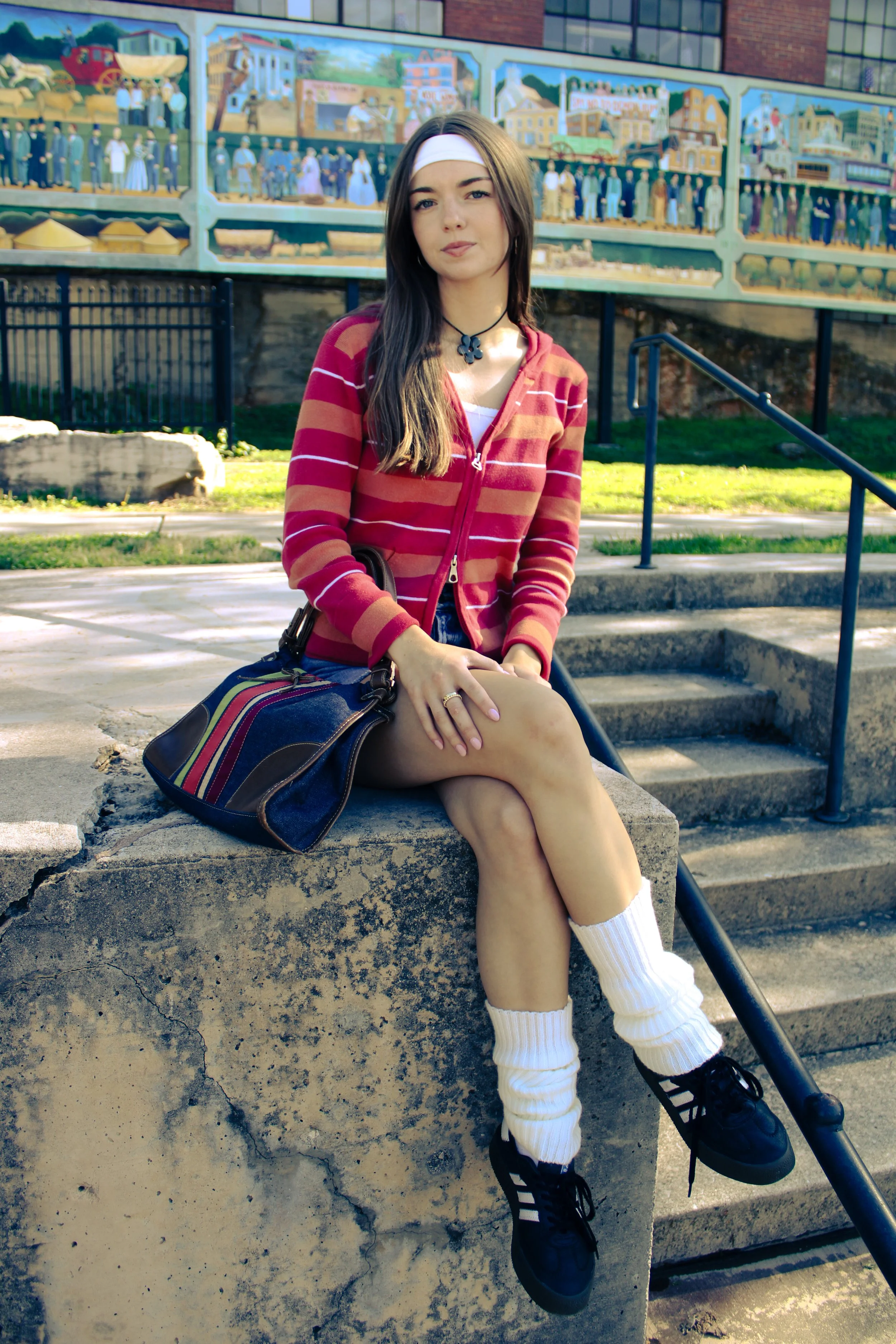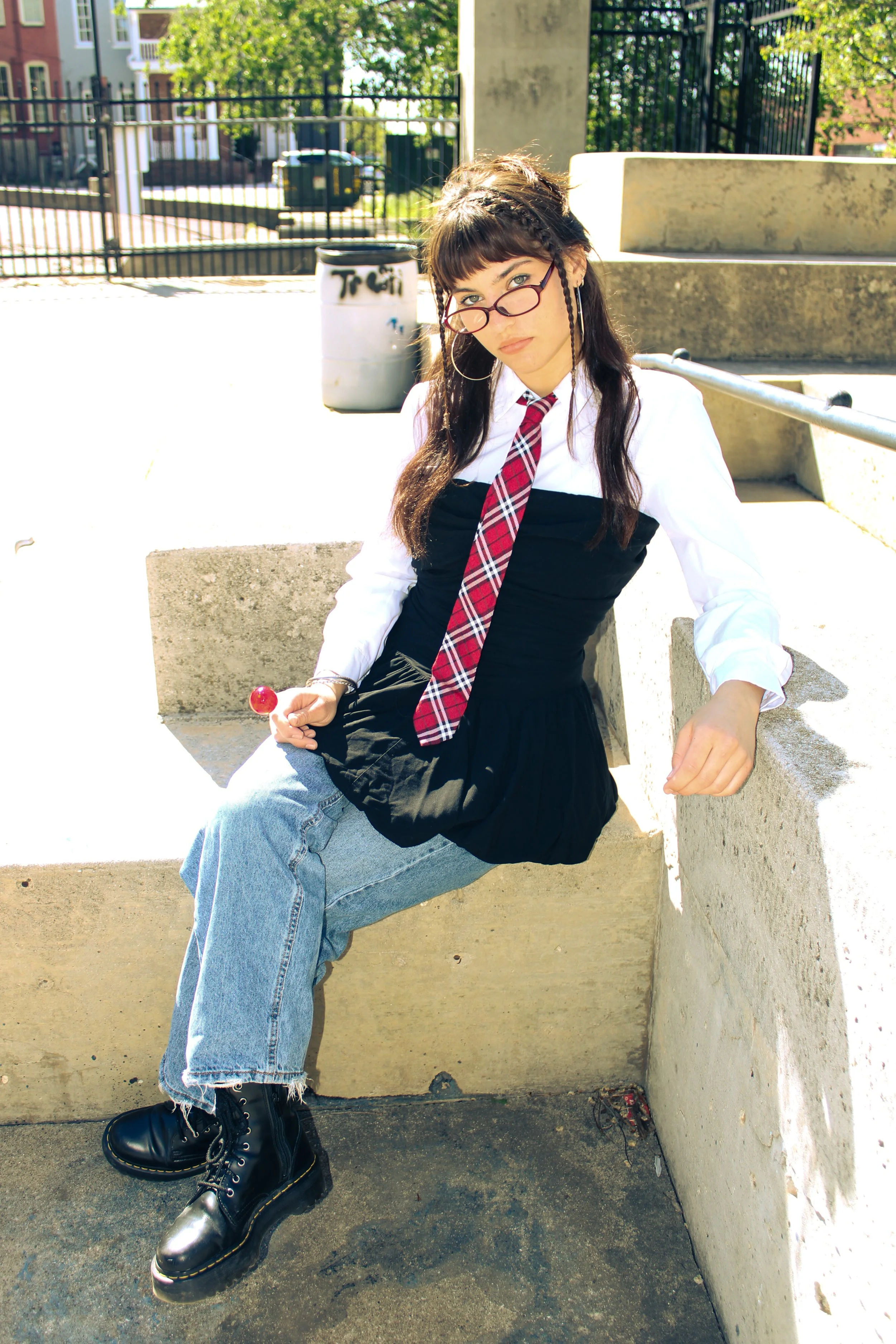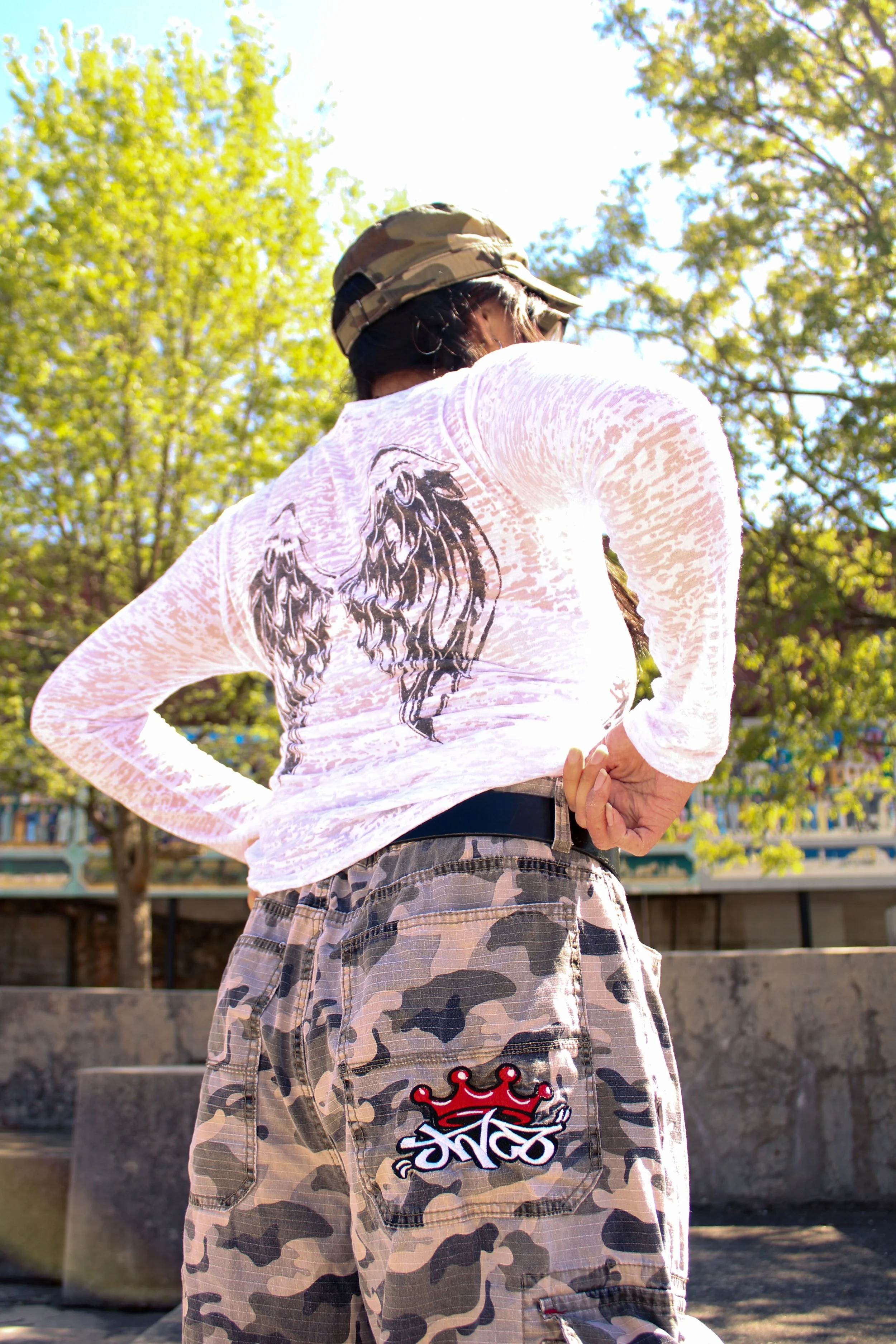Full Circle: How Fashion Keeps Repeating Itself
Writing and Photography by Alexis Loftis
Modeled by Ashton Diercks, Caroline Sluss, Ashlyn Sorrells, Abbi Flaugher, Lilly Templeton, and Desiree Doas
As a long-time glasses wearer, myself and many other pre-teens once sported those questionable, tiny rectangular framed glasses as their first pair. Looking back at photos of myself, I can't help but cringe a little bit at my bold style choices. In those same photos of me, you'll also find me wearing UGGs, headbands, flats, and a whole lot of animal print. Fast forward to today, I am now 21 and in college, and somehow I have managed to wear all these things again — within the last two weeks, no less. That includes my tiny rectangular wire-framed prescription glasses — except this time, I picked them out myself without any help from my mom.It almost feels like I am looking in the mirror at my 10-year-old self, but now, she’s considered fashionable?
This feeling of nostalgia is a common occurrence in the life of many older Gen Zers. What was once “ugly” is now cool, even edgy and chic. This phenomenon called the “trend cycle” describes the repeated rise and fall of popular fashion and media.
For instance, we saw specific styles during the 1950s that are notable of the time. Long circle skirts, fitted tops, bold lipstick, big hair, bangs, and fun patterns like stripes or polka dots all became prominent pieces of this era. The United States was post World War II at the start of the American consumerism boom. Things such as cars and technology became more accessible and affordable to the general public. We also saw major changes within American culture during the start of the Civil Rights Movement and the Red Scare. The Nuclear Conservative family was embraced, deemed “normal” and ultimately the standard. The system was working very well for these people, so they conformed.
The general idea of the time was “if I don't feel the system is broken, then it doesn't need to be fixed.” A direct response to this was rock music popping up into the mainstream, grabbing the attention of young people due to its ideas of rebellion, fun, sex, acceptance, and love. We can see this translated into the boundary breaking fashion of the time. Stars like Elvis Presley, Buddy Holly, and Little Richard were not only musicians, but also people who influenced culture and fashion through their musical personas.
Moving into the 1980s, we see the revival of the distinct 50s style, amplified and modernized. We see more chaotic patterns, even bigger hair, circle skirts with short hemlines, fun makeup, and cropped fitted tops. The 80s simultaneously consisted of government uncertainty, and the prominent rise of pop culture trends. America was post Vietnam War, and people were burdened by the financial costs of war, causing a lot of distrust of the government. The Reagan Administration vowed to fix this, adopting a slew of economic policies known as “Reaganomics.” Regan claimed these policies would create a shift towards economic recovery, like we saw in the 50s, but it eventually led to one of the worst global recessions in American history.
The Middle class was shrinking and the rich were getting richer. Along with rising fear of the AIDS crisis and the Cold War, the country was divided and skeptical. In the pop culture world, we saw the introduction of MTV. Artists like Madonna and Cher were being seen on the platform all around the world. They are recognized as fashion icons of the time, and overall allowed self expression through fashion a more mainstream thing. Furthermore, mall and shopping culture picks up, which inevitably results in ready-to-wear fashion becoming more common. Following the resurgence of rock in the 60s and 70s, hard rock became increasingly popular in the 80s. Bands such as Mötley Crüe, Guns N’ Roses, and Metallica were all the rage. Punks and Rockabillies alike donned leather, unique hair, and fun patterned clothes, reminiscent of the 50s. Both the 80s and the 50s were very revolutionary times, mirroring each other in ways not only related to fashion. These two decades are not the only instance of the trend cycle. We see these same patterns in the 70s and 1990s style as well; a prime example is “That 70s Show,” which was actually filmed in the 90s.
Fashion is influenced by many factors; one that recurs is the idea of reminiscence. Each time a trend comes back it is modernized, but the time between the trend being outdated and its return is getting shorter and shorter. A more modern example of this is the resurgence of the Indie Sleaze aesthetic, which was popular from the mid 2000s to the early 2010s, in direct relation to the recent “Brat Summer” trend. The two trends share many parallels such as messy hair, partying, drug-use, provocative clothing, boiler room shows, a carefree attitude, rebellion, and a lot of self-expression. Historically, fashion trends tend to cycle every 20 to 30 years, influenced by external factors such as media, politics, economics. However, within the last few years, trends have cycled in and out much quicker, which has warranted much concern. It's only been about 10 years since the indie sleaze aesthetic fell out of style, proving that the trend cycle is now moving much faster.
The traditional trend cycle comes in five stages: introduction, rise, peak, decline and obsolescence. These stages attribute to the length it takes for trends to cycle through, they need the time. Designers made collections with trending styles that influenced everyday wear; these trends stayed relevant for months, even years. Now with the rise of social media, especially in recent years, we are seeing new trends every month. These are known as microtrends. TikTok specifically is a big contributor to this shift, with how vast the platform is, its personalized algorithm, and never ending For You Page. We are now living in an era where a girl can wear an outfit with cowboy boots, a corset top, jorts, and big hoops while listening to EDM on her wired Apple earbuds. It's amazing how Gen Z has grown to be so unapologetically themselves, breaking the mold. However, these pieces less than 10 years ago were all associated with different styles, aesthetics, or even lifestyles — now no one would even think twice about it. Now, pieces once tied to specific spaces are regularly worn by people outside of those groups. This poses the question: are people empowered, confused, influenced, or overwhelmed? It feels as though everything is always in style, all at the same time.
Things like gorpcore, cottagecore, barbiecore, coastal cowgirl, and coquette are all about the -cores and aesthetics. These microtrends all have specific looks, but many blend together since they have very similar silhouettes, styles, and accessories — ultimately none of them are memorable. These trends just act as buzzwords to get our attention. They may come to fruition in the beginning of the month just to be forgotten after the month passes; then comes the inevitable: the trend will be seen as ugly or tacky within a year or two.
Fast fashion is fuelling the fire of microtrends as well. When things trend online, multiple brands will have that item on the shelves in store or available online within weeks. With clothing being imagined and made faster than ever before, we are feeding peoples over consumption habits and overall killing their personal style with it. The world produces around 80 billion pieces of clothing per year, which is about 400% more than what was made only 20 years ago. It used to be easy to pick out what decade a piece of clothing is from, but if you take a look at the timeline of 2020 fashion trends. You will see a big Y2K influence, which pairs with many of these cores and aesthetics. There are no specific patterns, silhouettes, fabrics or colors belonging to our current era, due to the decreasing longevity of trends.
What was once ugly is now cute, but it might very well be ugly or out of style again in the next couple months. One thing we can do to counteract the overwhelming pace of these trends is to embrace the “slow fashion” movement, which focuses on eco-friendly, sustainable, and ethical fashion. This movement also emphasizes underconsumption — the idea that people should be more mindful about their clothing purchases. Investing in basics that can be worn with anything, and then quality statement pieces is a focal point. Clothing should be seen as an investment, instead of something that is disposable simply to stay on trend. Finding timeless pieces for your wardrobe that also align with your own personal style will prevent contributing to this growing problem, while also allowing your wardrobe to more fit yourself.
At the end of the day, fashion is supposed to be fun and unique to who you are, not just a reflection of what is trending on social media. Trends are fun, but they come and go. So go out and wear those UGGs with your low-rise jeans because you want to — and that's all the approval you need.












